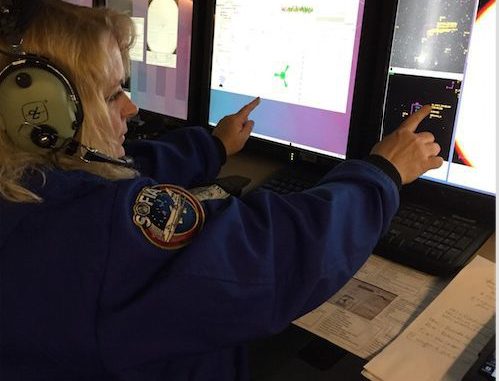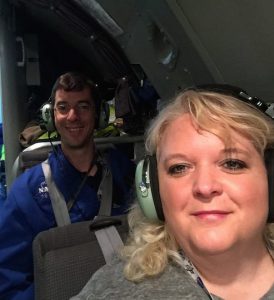
By Emma Crawford Kent
Daily Journal
TUPELO – Two Tupelo educators returned to Mississippi last weekend after a week spent observing researchers and scientists on a NASA research aircraft.

Connie Gusmus, science teacher at Guntown Middle School, and Bob Swanson, astronomy instructor at Itawamba Community College, were one of 11 pairs of educators from across the country selected to fly on SOFIA (Stratospheric Observatory for Infrared Astronomy).
The educators were participating in the Airborne Astronomy Ambassadors program, a professional development opportunity for educators designed to improve teaching methods and to inspire students.
SOFIA studies infrared wavelengths entering earth’s atmosphere.
Gusmus and Swanson arrived in Palmdale, California, where SOFIA would take off, and took their first flight on March 6.
They flew over the Pacific Ocean, acquiring data to be analyzed along the way.
“It was amazing,” Gusmus said of the experience.
On March 8, they flew again, traveling up the west coast of the United States, over Canada and cutting across the Midwest to return to California.
“It was truly an once-in-a-lifetime opportunity,” Swanson said. “If they would have me, I would do it again in a heartbeat.”
They even flew along Route 66, a bucket-list item for Gusmus – although traveling the famous roadway on SOFIA was a little different than it would have been in a car, as the aircraft flies at nearly 40,000 feet, just above the Earth’s atmosphere.
“I just can’t top that in a car,” Gusmus said.
Gusmus and Swanson also saw the Northern Lights as they flew across Canada.
The flights were 10-hour, overnight flights.
Gusmus and Swanson both said they left with a greater understanding of SOFIA and its mission. SOFIA, a Boeing 747 equipped with scientific instruments and a large telescope, focuses on the details of scientific processes in space and allows scientists to analyze how and why certain things happen.
The two teachers got to see SOFIA’s many instruments, and Gusmus said it was interesting to see how the aircraft has adapted to changing technology.It does this mostly by tracking different wavelengths.
For Swanson, one of the best parts of the experience was interacting with the scientists on board.
“It was just to me really cool to be in the presence of so many talented people,” Swanson said. “It was just neat to see science in action.”
Gusmus and Swanson were joined on their flight by a scientist from Italy studying a dwarf galaxy about 120 million light years from Earth.
“It was so gratifying that she was on board, and you could see the excitement in her eyes and her voice as the data was coming in,” Swanson said.
Both said they look forward to sharing their experiences with the community and their students. Swanson is planning a Backyard Astronomy event on ICC’s Fulton campus for April 20.
emma.crawford@journalinc.com
Twitter: @emcrawfordkent
